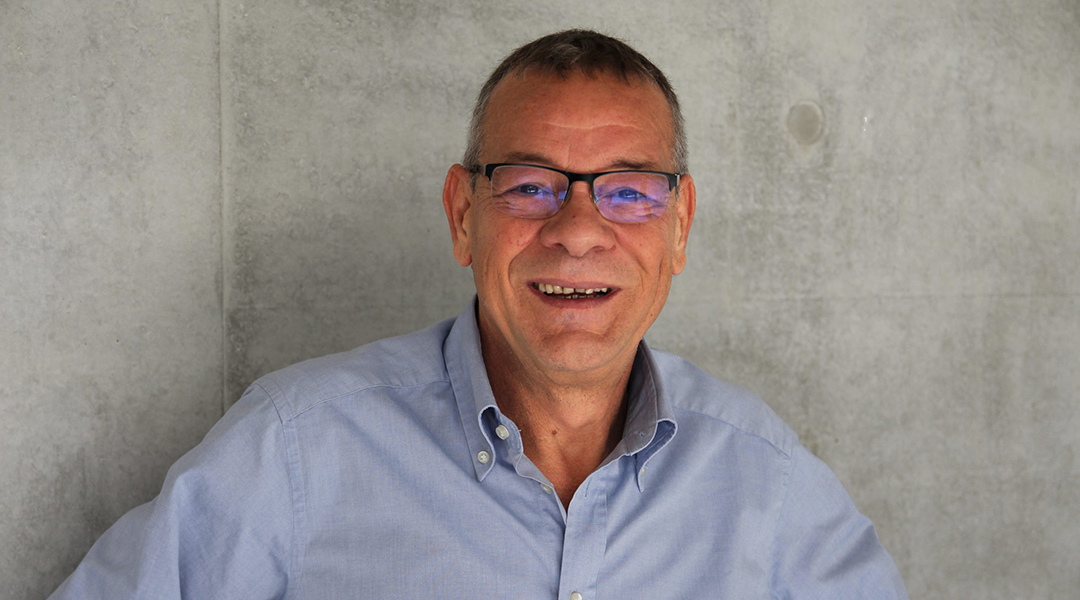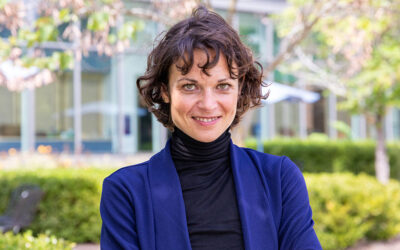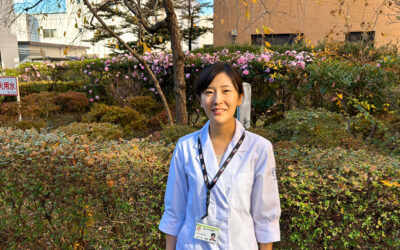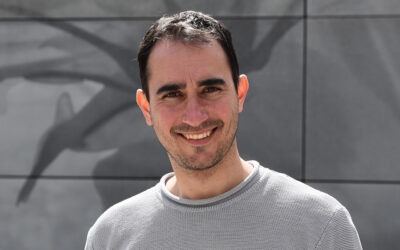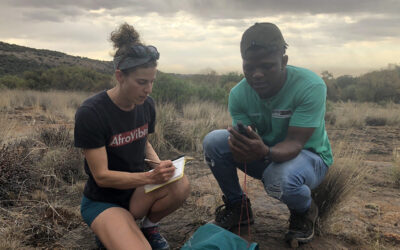Stefano Passerini, professor at the Karlsruhe Institute of Technology and Director of the Helmholtz Institute Ulm, has been working on the development of materials and systems for electrochemical energy storage for more than 30 years. With strong contacts to industry, his research focuses on the fundamental understanding and the development of materials for lithium batteries, such as ionic liquids, polymer electrolytes, and electrode materials.
What is your scientific background?
Scientifically, I grew up at the University of Rome. In mid-1983 I graduated in chemistry defending an experimental diploma thesis on infrared spectroscopy. A few months later my daughter was born and I decided to take care of her although this was uncommon in Italy at that time. After this amazing period, however, I wanted to re-join the scientific environment. In January 1986, I joined the research team of Professor Scrosati, one of the fathers of lithium-ion batteries, to develop electrochromic devices within a project funded by 3M Italy. Following [that, in 1988] I worked as a scientist in the research branch of the Italian oil company, ENIRICERCHE. However, I always had the wish to go for an academic career. Thus, in 1989 I joined once more the group of Prof. Scrosati to perform my Ph.D. studies. In 1993, I went to the University of Minnesota in the United States for my first international experience as a post-doc first and research assistant later.
Who are your role models/earliest influences or the people that may have encouraged/inspired you to enter a challenging STEM field?
My father, first of all. Despite being the owner of a coffee-shop in Rome, he was well educated before the Second World War. He had a profound culture and always stimulated myself to learn more.
Scientifically speaking, Professor Scrosati was my model for his approach to research and science and, even more, his awareness of social relationships in research work. He has always taken care of the relationships within the group and he has always given confidence and space to young people, even if they came from different research areas (spectroscopist), like me. His humanity, determination, and love for his job were a source of inspiration during my career and are models that I still follow.
Also, two famous sentences have influenced my development.
The first I got in touch with is in the poem Inferno of Dante Alighieri. In the 26th Canto there is a very famous statement of Odysseus: “Considerate la vostra semenza. Fatti non foste per viver come bruti ma per seguire virtute e canoscenza.” (“Consider your origin: you were not made to live as brutes but to follow virtue and knowledge.”)
The second sentence is written in the Aula Magna of the Chemistry Building in the University of Rome “La Sapienza”. It is from Leonardo da Vinci: “Tristo é quel discepolo che non supera il proprio Maestro.” (“Poor is the disciple that does not surpass his Master.” I am still working on this. But it is not an easy challenge.
What excites you about your work?
The challenges, especially the ones with myself. Discover and understand new materials, new systems. Propose what has not yet been proposed or develop concepts already proposed, bringing them as close as possible to a real application. Scientific research is an amazing challenge, but what I find most gratifying is the possibility of linking science with practical application.
What were some challenges you faced during your career? What advice would you give to your younger self or new researchers entering the field/how could things be improved to avoid them?
The first challenge I had to face occurred right after my diploma graduation. In fact, in the early 1980s, the fall of the Italian chemical industry occurred. Also, in those years the Ph.D. course did not exist yet. I was lost: I couldn’t continue to do research and I couldn’t find a job suitable for my educational path. So, I decided to take care of my just-born daughter. This was one of the best decisions I made in my life. After, I was given the chance to return into the field of scientific research thanks to Professor Scrosati and a scholarship offered by 3M Italia.
I regret to say that the next challenges were always related to the lack of interest in scientific research in Italy, which pushed me to move abroad, first to the United States, then to Germany after an intermediate, not scientifically interesting, period in Italy.
I would advise young researchers not to take shortcuts: they never work in the long run. Try to study in active or high-profile groups. Work hard and be always very rigorous from a scientific perspective: a mistake or a carelessness can go with you for the rest of your career. But above all, I advise all researchers and anyone who wants to stay on the academic path to spend periods abroad to come in contact with different mentalities and approaches.
What would you say has been your most impactful contribution to your field and what do you hope will be your legacy?
From the scientific point of view, I have strongly contributed to the development of ionic liquids as such and integrated [them] in polymeric matrices in electrochemical devices, especially batteries.
From a more practical point of view, it was an activity carried out in the 1990s when I was in the USA. Within my cooperation with [industry], I participated in the development of wireless rechargeable hearing aids, making use of lithium-ion batteries. We were very proud of this technological development. I still remember how difficult it was to produce the first 100 cells by hand. But the result was amazing. The hearing aids were lasting for more than a day and were recharged overnight. At the time, however, this technology was not accepted by the hearing aid producers nor the battery producers. Recently, however, these devices have become very common. Rechargeable hearing aids are helping people with hearing loss while wireless earphones have been widely adopted in portable electronics.
Now I’m focusing on the development of environmentally sustainable batteries and I very much hope that this is my legacy and that it will be continued by the members of my group. I consider it very important to develop materials and cells with a low environmental impact to avoid falling back into harmful loops.
What future discovery or achievement would you most like to see?
Regarding my main research field, the development of lithium metal batteries. I [have been] working on this subject since I joined Professor Scrosati’s group in 1986. Developing this battery chemistry would allow reaching the limits of electrochemical battery storage, as lithium is the most electroactive element and allows [the storage of] the highest energy by weight. However, we still need to achieve full safety, decrease the environmental impact, and improve the performance, especially at room temperature. I am convinced that such improvements can be achieved using solid-state electrolytes, which are the main subject of research in my group at Helmholtz Institute Ulm (HIU) in collaboration with, among others, Dr. Dominic Bresser and Dr. Alberto Varzi.
Which trends in science concern you, and why?
I am not worried about any specific scientific sector as much as the behavior of scientists involved in research fields linked to huge commercial interests. In certain perspectives, some scientists may no longer interested in doing better science than before, but rather following profits. This competition is leading to behaviors and excesses that can become very worrying. A scientist must be honest and ready to admit mistakes. However, in an environment influenced by strong economic interests, this is not always the case. This trend turned out in the last couple of decades, i.e., since academia got more and more involved in the improvement of, regarding my research field, batteries. The strong relationship between academia and industry is greatly stressing the behavior of some scientists, which have made and still make promises not always supported by realistic estimations. Just to mention a case, I remember an announcement about the development of a silicon negative electrode for Li-ion batteries increasing by a factor of 10 the Li-ion energy storage capacity. This was a not appropriate announcement since the 10-fold increase of the negative electrode cannot result in the 10-fold increase of the cell energy storage capacity. Many other cases could be mentioned. Presently, I see a big risk regarding the promises made on batteries using multivalent cations.
Can you briefly comment on the topic/research discussed in your Advanced Energy Materials essay? Why do you think it was such an important discovery? What has been its lasting effects on your research or the field in general?
In the essay, written with Prof. Linda Barelli (University of Perugia, Italy) and Dr. Manuel Baumann (Karlsruhe Institute of Technology), we propose an approach toward the large-scale and long-term (seasonal) storage of renewable energy, which could be complementary (or alternative) to hydrogen-based energy storage systems. Our proposal is based on the accumulation of energy in reactive metals, i.e., those metals that react spontaneously with water and oxygen (chemically and/or electrochemically) generating large quantities of energy. The article focuses on two reactive metals, aluminum and sodium, which are very abundant in nature, industrially produced and easily implemented in electricity production. These two examples can be taken as the “extreme” of all reactive metals. Sodium can be produced and used in electrochemical devices (for example fuel cells powered not by hydrogen but by metallic sodium). For aluminum, the optimal use goes through chemical conversion with steam that generates hydrogen and heat. Both can be used for electricity generation but also direct heating, especially in the Nordic countries during the winter months.
With the essay, we would like to make scientists and policy-makers aware of the great advantage of reactive metals, i.e., the high volumetric energy density. For example, we show that aluminum can achieve round trip efficiency (RTE) equal or slightly higher than hydrogen while offering a 10-fold volumetric energy density. Besides, aluminum is simpler to accumulate everywhere without any infrastructure. A soccer field covered with five meters of aluminum corresponds to 1 TWh energy storage. The annual energy needs of Germany can be stored using less than 10 % of the existing soccer fields even using the thermal conversion process mentioned in the manuscript. Developing high power primary aluminum batteries, i.e., avoiding the inefficiencies of the thermal cycles, would boost the RTE of a factor up to two. Similar or even higher RTEs have been already demonstrated in lab-cells for the energy storage, making use of near-room temperature electrochemical processes […] according to the joint results we achieved together with the group of Prof. Kim at UNIST (South Korea).
Anyway, no matter if hydrogen and (possibly or) reactive metals are the solution for seasonal energy storage, I foresee the great role of electrochemistry in contributing to the sustainable energy future.
What are your future plans?
For the few years I have left to work at HIU before retirement, I will focus my activities on improving the sustainability of batteries for the portable and EV markets, especially, lithium-ion batteries, which will most likely be those used in the next 15 years at least. Secondly, the development of large-scale, seasonal storage systems based on reactive metals. Specifically, I strongly believe in sodium seawater chemistry both for the production of sodium (energy storage) and its later use for electricity generation.
What are your interests outside of the lab? Do you think a work/life balance is important or even attainable in your line of work?
I enjoy myself in many activities outside of work, although they have changed over the years. But I love my job and I enjoy doing my job. Perhaps for this reason, for a fair balance, not to forget to water the imagination, I love reading imaginative books, visiting museums and art exhibitions.
In principle, outside of the lab, I try to see people not related to my work, to avoid ending up talking about the same topics. Most of my friends are non-scientists or scientists in rather far disciplines.
Nonetheless, having a balance between private life and work is important but not always possible: it is a continuous compromise. I share my vacations or my weekends with business e-mails and my work as editor for the Journal of Power Sources.
To learn more about Passerini’s work and his Essay on the potential role of reactive metals for a clean energy transition, read the paper published in Advanced Energy Materials, which is part of a recent Virtual Issue “10 Years of Advanced Energy Materials Research” celebrating the 10th anniversary of the journal.

